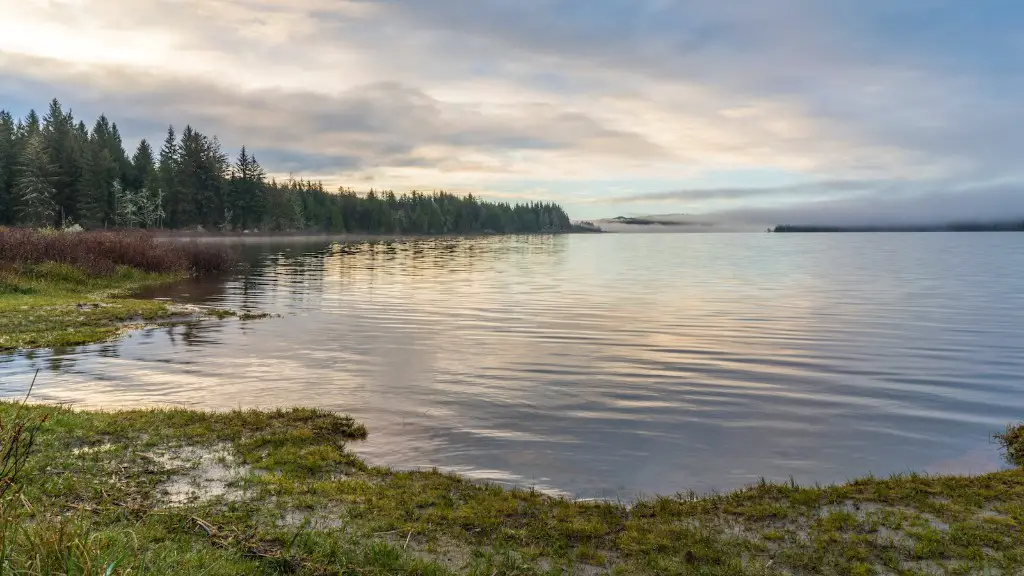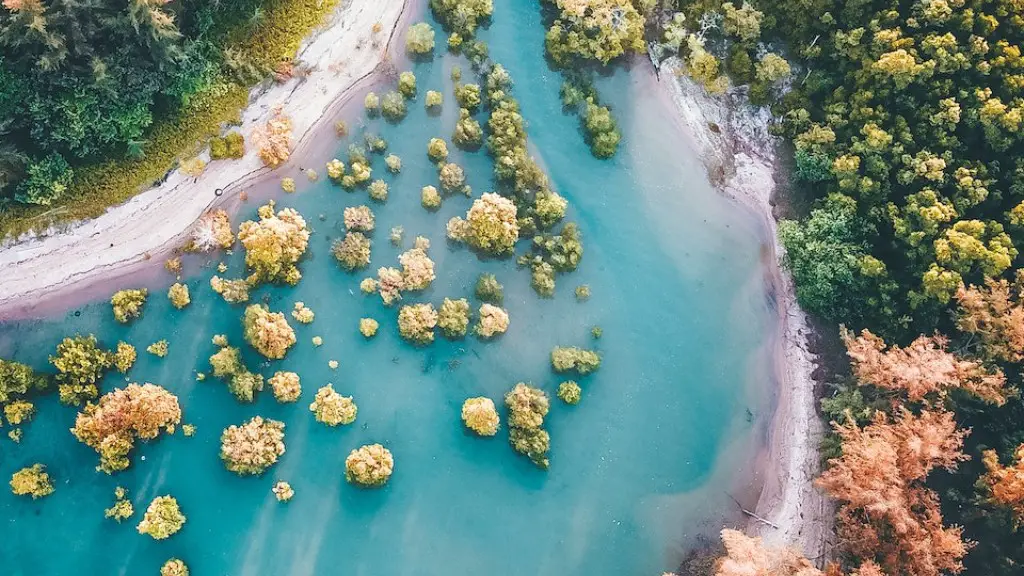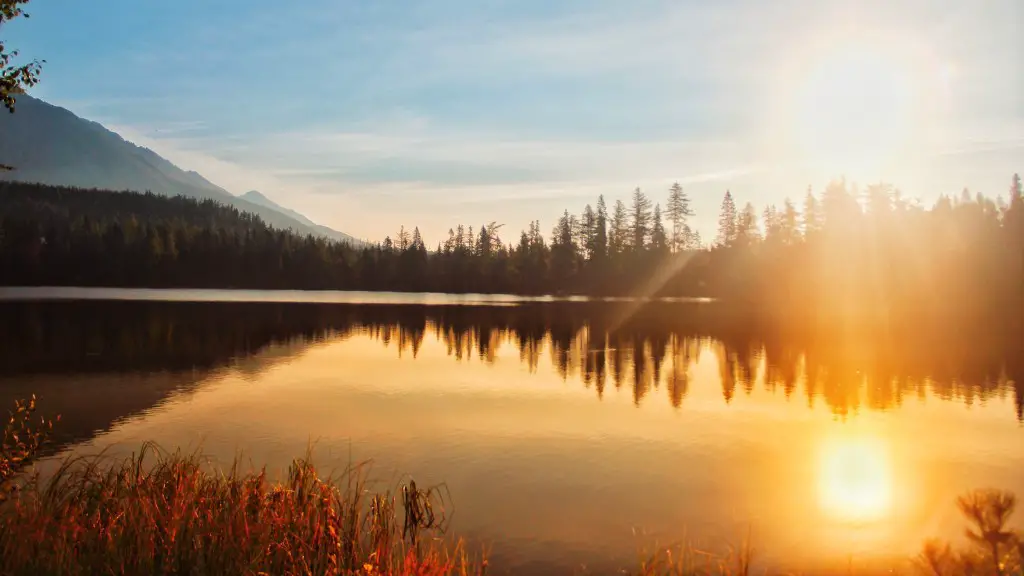Composition of Lake Huron
Lake Huron is one of the five Great Lakes located in North America. It is the second largest of the five and covers an area of 23,000 square miles. The lake is connected to the other four Great Lakes through the Saint Lawrence Seaway and is also linked to two rivers, the Saint Marys and the Saint Clair. The lake has a maximum depth of 750 feet and has the longest coastline of any of the Great Lakes. Lake Huron is made up of more than 30,000 islands, many of which are uninhabited. It is reported to contain more than 390 trillion gallons of water, enough to fill Lake Michigan four times.
What Causes Tides?
Tides are caused by a combination of the gravitational force of the moon, sun, and the rotation of the earth. Gravity from the moon and the sun cause the water level of the ocean to rise and fall twice a day, which is known as the daily tidal cycle. At any given location, the tide will rise and fall twice a day at different heights. The strength of the gravity of the sun and moon will determine the height of the tide. This is why tides are higher during the full moon and new moon due to the greater combined gravitational force of the sun and moon.
Does Lake Huron Experience Tides?
Lake Huron is affected by the gravitational forces of the moon and sun, but not to the same degree as the ocean. The force of gravity on the Great Lakes is significantly weaker and the daily tidal cycle is not as pronounced. As a result, the lakes experience what is referred to as a seiches—short, irregular waves that occur in a few minutes to several hours and can cause a noticeable rise and fall in the water level.
While the rise and fall of Lake Huron does not have a regular cycle like the ocean tides, the effects of the moon and sun on the water can still be observed. For example, the highest water levels in the lake occur closer to a new or full moon, when the combined gravitational force of the moon and sun are greatest. Despite this effect, the tidal range in the lake is much lower than the ocean.
Impact of Wind on Lake Huron
In addition to the gravitational forces of the moon and sun, wind can also cause significant changes in Lake Huron’s water level. Wind causes waves to form on the surface of the lake, which can cause an increase or decrease in the water level. This is known as a wind seiche—the water level rises as the wind pushes the water onto the shore, and then falls as the wind dies down. This phenomenon can result in dramatic changes in the water level over a short period of time.
Impact of Seiches on the Environment
Changes in the water level of Lake Huron caused by seiches can have a significant impact on the lake’s environment, particularly on the lake’s shoreline. Seiches can create erosion, which can damage beaches, marshes, and other habitats. They can also cause flooding in vulnerable areas and disrupt fishing habitats. For example, when the water level rises suddenly due to a seiche, it can overwhelm spawning grounds for different species of fish.
Monitoring of Lake Huron’s Water Level
The water level of Lake Huron is monitored by the U.S. Geological Survey. The USGS operates a system of buoys and monitors that measure the height of the lake on an hourly basis and records this information in graphical and tabular form. This monitoring system has been in place since 1952 and is used to predict changes in the lake’s water level due to weather, tides and seiches.
Troublesome Algal Blooms
Algal blooms are an issue on Lake Huron, which are often caused by an influx of phosphorus and other nutrients that wash into the lake from agricultural runoff, wastewater and urban sewage. Algal blooms can lead to oxygen depletion in the lake, which can cause fish kills. Seiches can cause an influx of these pollutants and lead to algal blooms and they can also carry sewage and other pollutants from one part of the lake to another, leading to algal blooms in different areas.
Management of Tides, Seiches and Algal Blooms
The effects of tides, seiches, and algal blooms on Lake Huron can be managed with land use planning and water management strategies. For example, reducing agricultural runoff can help to reduce the nutrients that are washed into the lake, reducing the incidence of algal blooms. Storm water management, using retention basins and other strategies, can also help to reduce the impact of seiches on the lake.
Adaptation Strategies
Adaptation strategies are also being developed to help mitigate the impact of the changing water levels in Lake Huron, which can result from changes in climate. These strategies include shoreline stabilization, wetlands restoration, and stream banking. These strategies help to stabilize the shoreline and reduce erosion from unpredictable changes in the water level.
The Great Lakes Water Compact
The Great Lakes Water Compact is an agreement between the U.S. and Canadian federal governments that was designed to protect the Great Lakes. The agreement was designed to ensure that the states and provinces surrounding the Great Lakes agree to use water responsibly and to protect the Great Lakes’ ecosystems. The Compact also requires states and provinces to coordinate their water management decisions, which can help protect against dramatic changes in the lake’s water levels due to fluctuating water usage.
Conclusion
Lake Huron is an important natural resource in North America and its water level is affected by a number of factors, including the gravitational forces of the moon and sun, wind, and changes in climate. Changes in the water level can have significant impacts on the lake’s environment, including the erosion of the shoreline, increased algal blooms, and disruption of fish habitats. Adaptation strategies and water management policies, such as the Great Lakes Water Compact, are used to help reduce the impacts of changes in the lake’s water level.


